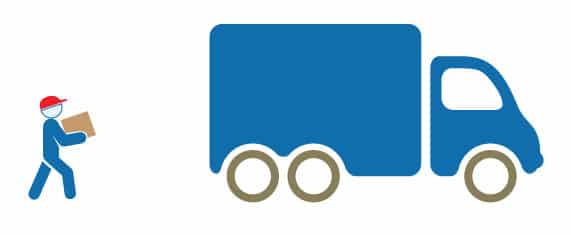The holidays are right around the corner. With them come Black Friday sales and Cyber Monday shopping sprees. These are exciting times for buyers and sellers alike – but if you’re unable to estimate demand, you could find yourself in trouble! Let’s take a few minutes to talk about how you can estimate demand for your business. The old adage still rings true: knowledge is power!
Need help fulfilling orders for your business?
Request your quote today.
7 Benefits of Estimating Demand

First, let’s take a moment to review all the benefits of estimating demand. You’re not just making guesses about how much money you’ll bring in. No, this is a necessary part of running a business.
1. Demand estimation helps you make accurate financial forecasts.
This may seem like a no-brainer, but it’s truly one of the strongest reasons to estimate demand. If you have a good idea of how much revenue your business can bring in, you can set more accurate budgets for labor, supplies, and marketing. You can prepare in advance for incurring the cost of goods sold. It makes your life all-around easier.
2. With better estimation, you can have a leaner supply chain.
Better estimates mean less waste. This makes it possible to have a much leaner supply chain. Good estimates can prevent you from making too much inventory and thus wasting a lot of money and supplies.
3. Staffing will be easier.
The holidays are notoriously tough for many industries. People work a lot simply because they have to in order to meet demand. If you have a clear sense of how much demand there will be for your products, you can avoid two awful scenarios. The first being where you under-staff and everybody has to work at a burnout pace to cope. The second being where you over-staff and people stand around wondering what to do next.
4. It will be easier to create a sales and promotion strategy.
Having a clear sense of how much market demand will help you decide how much to market your own products. This is the foundation of a well-crafted sales and promotion strategy.
5. Your business plan will be generally more accurate.
Having clear estimates for demand will impact every single area of your business. Overall goals become more well-defined and departments are more able to create strategies to meet those goals. Without estimates of demand, business plans contain more conjecture than tactical advice.
6. You’ll gain peace of mind.
All the reasons above ultimately lead up to this one. The simple fact is that having a defined plan will make you feel better, which is reason enough in its own right to focus on estimating demand accurately.
7. Your company will signal competence and control to stakeholders.
Lastly, there is a general expectation that companies of a certain size have the ability to forecast their revenues. It makes stakeholders nervous when a company cannot. You must be able to estimate demand in order to attract investors.
Need help fulfilling orders for your business?
Request your quote today.
8 Ways to Estimate Demand

The benefits of estimating demand are clear. However, actually estimating demand can seem like a tall order. Fortunately, because this is such a vitally important business function, there a lot of methods you can use to estimate demand.
1. Use past sales to estimate future demand.
If you’ve been in business for a while, the easiest way you can estimate demand is by looking at your previous sales figures. Sales revenue tends to follow patterns based on your industry and on your company’s specific actions. For this reason, historical patterns are a reasonably good predictor of future patterns. This isn’t a perfect method, though. For one, it doesn’t tell you what market demand looks like for the industry as a whole. Historical data doesn’t tell you what you can make, it merely tells you what you have already made. Lastly, any investor has had the axiom “past performance is no guarantee of future results” drilled into their head. The same principle applies here.
2. Check the cost per conversion and overall budget of your PPC ads.
There a lot of ways to generate sales for eCommerce. One of the most common ways is by running pay-per-click (PPC) ads on sites like Google and Facebook. If you’re in the habit of using PPC ads, take a close look at your cost per conversion. If your overall ad budget is going to increase for the holidays, take a moment to calculate how many additional sales you will make by doing so. Ads don’t always scale neatly like this, but when they do, they can be tremendous for estimating demand.
3. Use publicly available market data.
Let’s say you don’t have historical data to rely on and you aren’t using PPC ads. Alternatively, let’s say you’re breaking into an entirely new market or simply want to gauge your company’s true growth potential. There are all kinds of rich data sources that will help you get started. One example provided by Chron is to use the BLS Consumer Expenditure Survey. But that’s not the only one you can rely on. There are scores of government papers and trade magazines that can help you find data tailored for your industry.
4. Take surveys and hold focus groups.
Not every industry comes with easy to collect market data, though. Sometimes you create a product in an emerging industry. Other times, your niche is relatively untapped so market data either doesn’t exist or is of low quality. In situations like this, you can often ask customers directly what they think. Some methods of doing this include issuing surveys and holding focus groups. Self-reported data is not perfect, but it’s often a great starting point!
5. Conduct market studies.
If you’re looking for something a little less subjective than surveys or focus groups, you can always look to market studies. Market studies allow you directly estimate demand by using scientific principles to test demand under certain situations. Market studies are time-consuming and they’re not for everyone. But if you need something more robust than the other methods of estimating demand, give them some consideration.
6. Run a regression analysis.
If you have a lot of data about demand and you’re not sure how to parse it, consider running a regression analysis. A working knowledge of statistics will help you get started, but it’s not necessarily required. The basic idea of regression analyses is that you will take a cross-section of real market data, define variables, and figure out how variables relate. That is to say, you can figure out how specific changes to your product or business will affect demand.
7. Ask your sales staff.
In the pursuit of market data, it’s easy to miss the information that’s right in front of your face. If you want a sense of how much market demand there will be for a given product in a given time, often the first place you can start is by asking sales staff. Many salespeople have a deep, hard-earned knowledge of their numbers and can provide reasonably accurate estimates even without more statistically rigorous methods.
8. Ask outside experts.
Even after analyzing available data, asking customers directly, and checking with your sales staff, it is possible to walk away with an unclear sense of demand. That’s okay. In situations like that, outside experts can often provide a good sense of market demand even when hard data is unclear, contradictory, or absent.
Final Thoughts
A clear-eyed look at market demand will make it much easier for your business to prepare for the upcoming holidays and for the future in general! The benefits are myriad as are the methods that you can use to estimate demand. Use all the information available to you. Think deeply about how you can use that data to your advantage. Then go forth and prosper!
Need help fulfilling orders for your business?
Request your quote today.
You’ve done everything by the book. Your Kickstarter campaign is almost ready to launch.
You made a great product. Built an audience. Set up a campaign page.
But how do you ship it?
We put this checklist together to help you get started. It's free.





